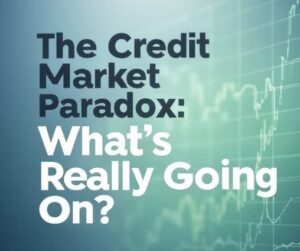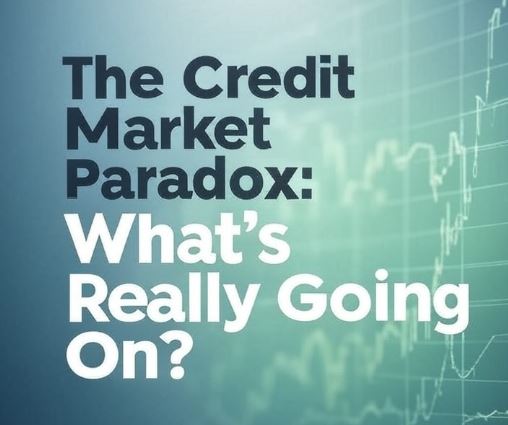
October 1, 2025 – “October. This is one of the peculiarly dangerous months to speculate in stocks. The others are July, January, September, April, November, May, March, June, December, August, and February,” Mark Twain wrote in his 1894 novel Pudd’nhead Wilson.
To the best of my knowledge, Twain did not write a similar maxim regarding the credit markets. But given recent credit market dislocations, perhaps he should have.
It is often said that “credit leads, and equities follow,” in terms of interpreting economic signals and their market implications. Historically, market prognosticators have leaned toward the notion that credit is the smart money, while equities are the speculative or hot money.
Ergo, it begs the question – when reading the tea leaves, what is an investor to do when different segments of the credit markets are communicating conflicting signals?
Currently, there are conflicting signals in the credit markets across sub-investment grade and leveraged credit, which, for comparative purposes, can be represented by four large and liquid market indexes:
- Broadly syndicated loans (BSLs)
- U.S. regional bank stocks
- High-yield bonds
- Business Development Companies (BDCs) / liquid private credit

Source: Bloomberg
Legend: White line – Liquid private credit; Orange line – High yield bonds; Yellow line – Regional bank stocks; Red line – Leveraged loans
On one hand, the junk bond, BSL, and regional bank markets have rebounded, more than recovering their April losses, indicating benign credit conditions and low U.S. recession odds. Conversely, the BDC / liquid private credit market has declined substantially, particularly over the past two-and-a-half weeks, signalling high U.S. recession odds and widespread defaults among private-equity backed companies. Note that approximately 85% of BDC loan portfolios are to sponsor-backed companies at an average loan-to-value of around 40%. Therefore, the significant and widespread price weakness and Net-Asset-Value discounts within the BDC secondary market pricing imply massive losses for private equity funds. Meanwhile, popular private equity evergreen funds have only shown consistent positive monthly returns this year. Also, BDC loan portfolio fundamentals have held up year-to-date through the second quarter.
Moreover, as high-yield bond spreads have compressed to multi-decade lows, yields on listed BDCs have surged. With the recent negative sentiment and drawdown in the liquid private credit sector, yields have risen to an average of nearly 14%, matching April’s peak.



Note: “Mag 7” and “Big 10” refer to the top 7 and 10 unlisted BDCs, respectively
Meanwhile, listed BDCs, which often have meaningfully similar loan portfolios compared to their unlisted brethren, are mired in a bear market, with funds managed by leading firms trading at 75 to 95 cents on the dollar (compared to 100 cents for their unlisted sister funds). Market historians would be right to note a similar dynamic between public REITs and private REITs that occurred several years ago.
Who will be proven right? Are BSLs, junk bonds, and regional bank stocks too bullish in their economic forecasts of favourable credit conditions and no recession? Or is the publicly-traded BDC market, which is pricing in widespread credit deterioration and private equity company defaults along with rapidly increasing loan non-accruals, too bearish?
Either way, there could be an opportunity for investors, particularly for those allocated to the unlisted BDC space, who can redeem at 100 and buy in the liquid market at 75-95.




